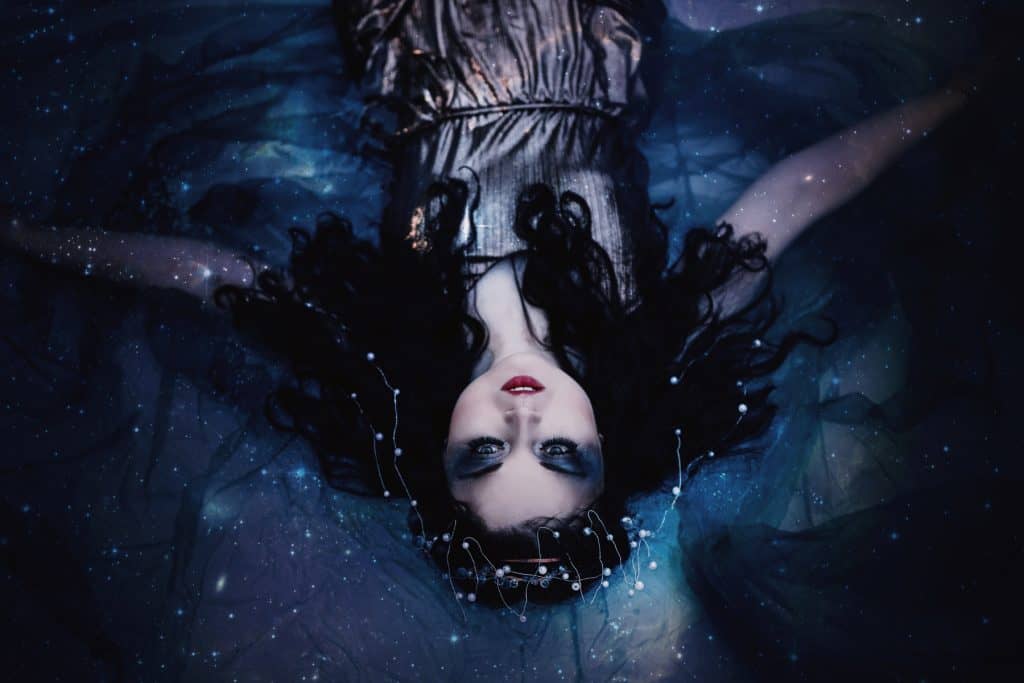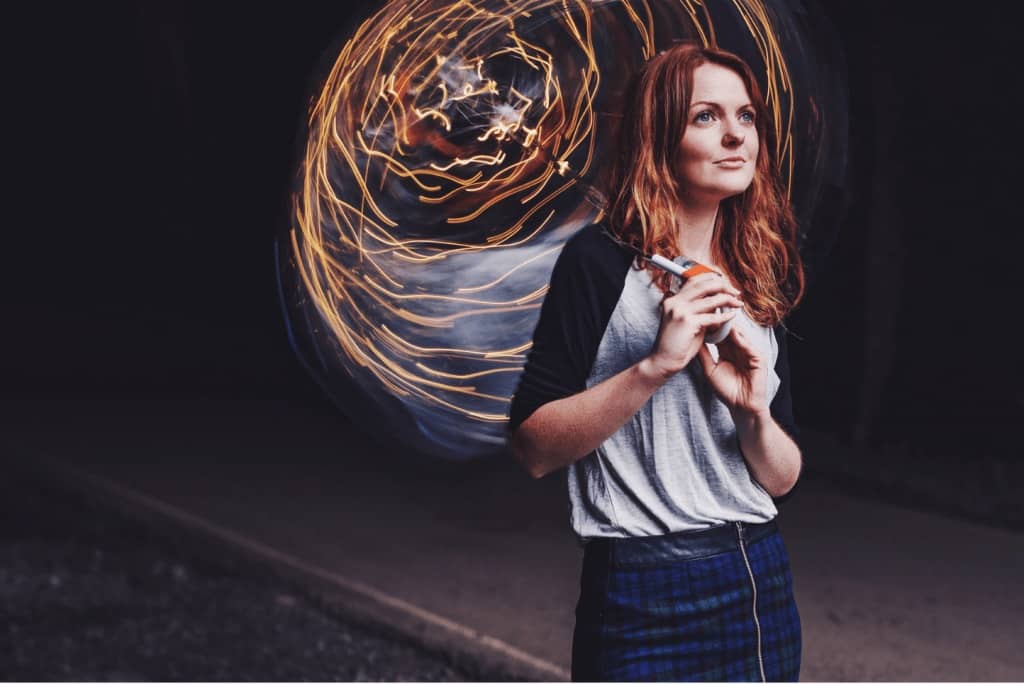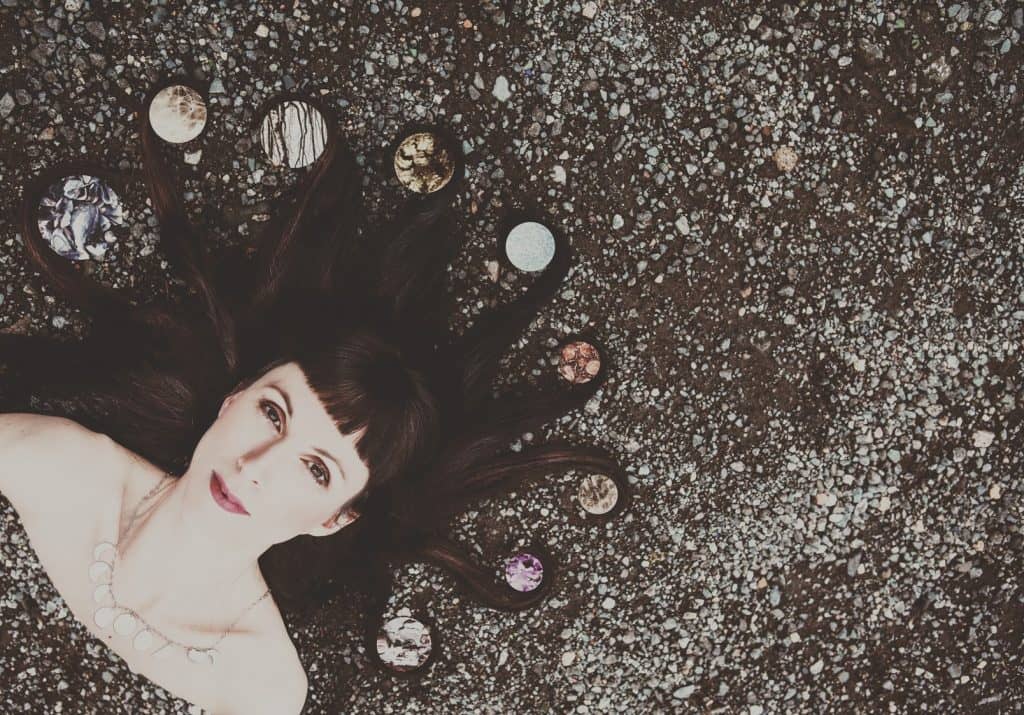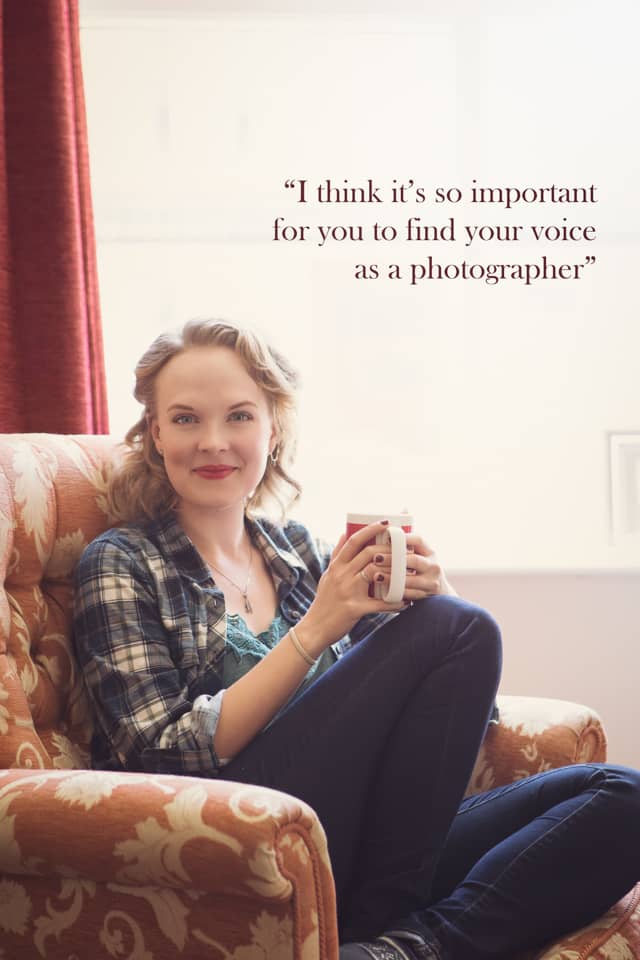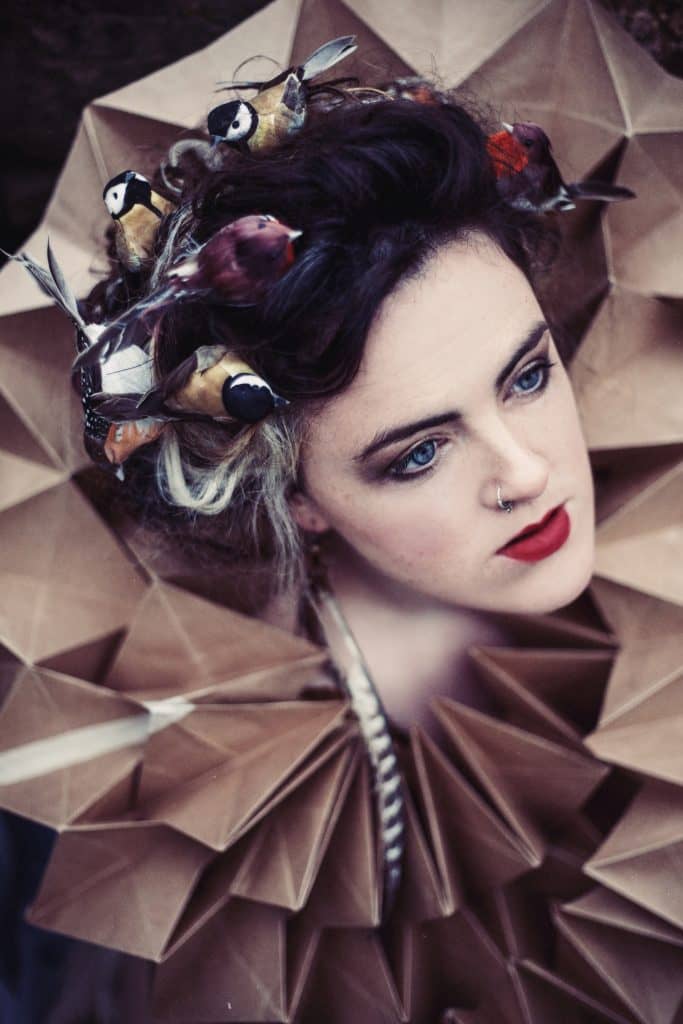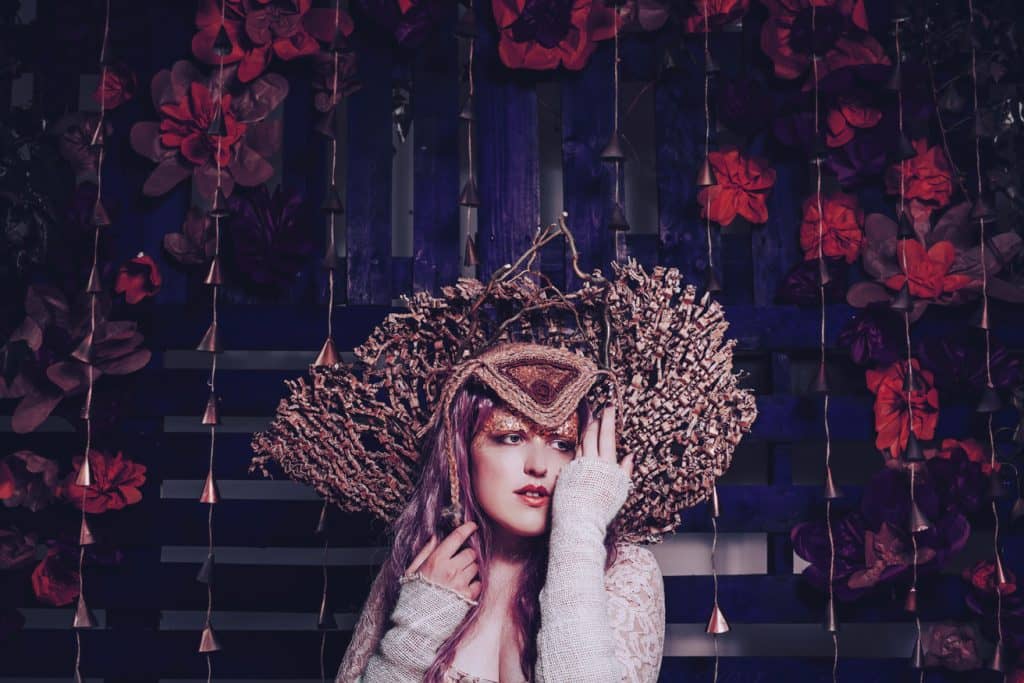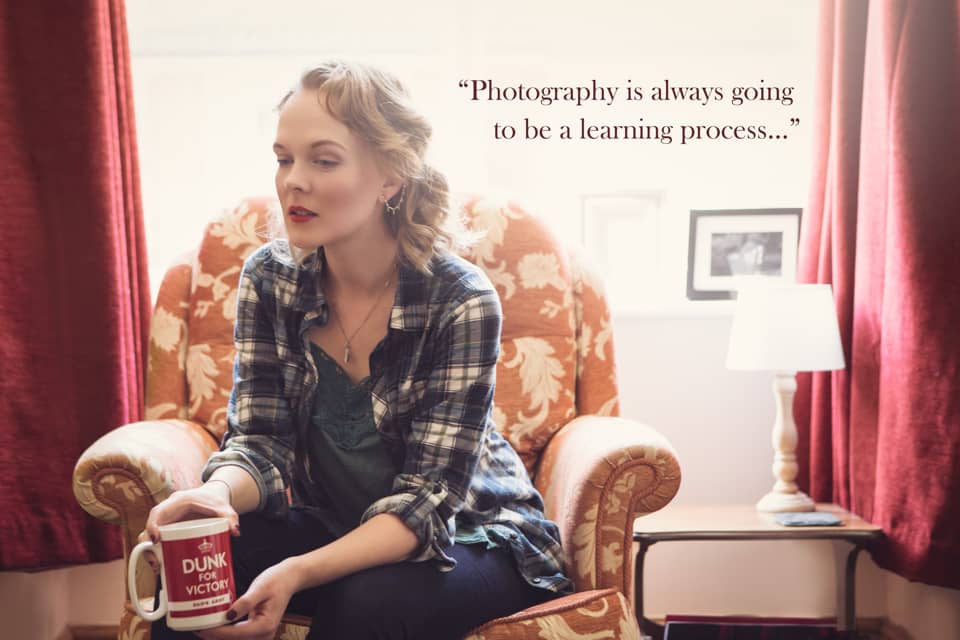It’s fair to say that visual art and music have always been inextricably connected and never more so than today. One person who sits firmly at the intersection of the two art forms is Elly Lucas. An acclaimed musician in her own right, notably as one-half of an R2 folk award nominated partnership with David Gibb, Elly is renowned in equal measures for her stunning photography work.
With a client list that reads like a who’s who of British folk music and a visual style that’s almost instantly recognisable as an ‘Elly Lucas image’, her creative talents are in demand from artists across the UK. If that wasn’t enough, she also runs an equally successful wedding photography business.
Keen to pick her brains and see if I could somehow assimilate some Elly Lucas photography magic, I caught up with Elly in Sheffield for a fascinating chat about gear, the creative process and to find out the back stories for some of the images in her fantastic portfolio:
So Elly Lucas, how did you get into photography?
My love of taking snaps really started when I was studying GCSE Art. I’d always enjoyed taking snaps and have always been a bit of a nature nerd and my art teacher at the time clocked onto that. He suggested that maybe I should try and start creating my own source material to work from for my art coursework and that’s exactly what I did. I didn’t have any formal training in it, but him simply getting me to think slightly more creatively in terms of composing images and putting things together really opened up my eyes to experimenting. I remember setting up a couple of scenarios just to record their progression, for example, I did one with foxgloves where I took a series of photos dripping wax onto them to see how they transformed…all sorts of strange stuff.
As my art course went on, I started realising just how many photos there were alongside my more traditional work and how much I’d enjoyed creating them, so I just kept going with it. Then a couple of friends at school asked me to take their portraits, and I just tumbled into it really. I dived into my first wedding when I was seventeen, which slightly gives me night-terrors now, but it was fine…I managed and they liked the pictures and out of that, I got a wedding in Spain shortly afterwards!
Doing the music and the photography together worked really nicely and meant that I tended to make contacts for both pretty much wherever I went. I did all of the duo’s visuals and then all the stuff for my pal Lucy Ward; I think that started gradually pushing it out to a wider and wider audience and it was ultimately quite an organic progression really.
Emily Mae Winters Album cover shoot (also reviewed here): “I’m going to go right ahead and say it was Emily’s idea to get in the water! She got in touch and was like ‘I’d really like to get in a lake or something’….I said ‘It’s November, I’m not letting you get in a lake!’. We batted around a few alternative ideas, and I eventually caved and bought an eight-foot paddling pool. This got set up in the garden at my Dad’s house because he’s got a reasonably big garden and I knew she could at least get a hot shower immediately afterwards to warm up then! She was keen to try a couple of different looks in the water originally, and I just remember thinking ‘I’ve put my foot in that paddling pool, you’re not going to want to be in there any longer than you have to be!’. It was amazing, and we did some fun siren-esque styling for it; I made her a little crown out of some floristry pearls and everything. We made sure we got some pictures with all the styling intact before we went for the paddling pool. I shot all those images in the water in about five minutes, and Emily was an absolute trooper…it really was bloody cold!”
Let’s head over to Geeksville. What have you got in your bag?
I have two Canon 5D MkIII’s which I love; they’re my babies. I love that I can record to two memory cards at a time; it means that at the end of a shoot I can just take the SD cards out and put them in my handbag and then I know the images are in two separate locations, so I’m backed up before I do anything. It’s the best thing ever, especially for weddings and high-profile shoots where you’re thinking ‘Oh God, please let nothing happen to the files!’
I tend to shoot with two camera bodies; I’ll normally have a wide-angle on one, and a slightly more zoomed lens on the other. I’ve got the Canon 70-200mm f/2.8 zoom lens which I love; it’s brilliant for nerding out about details but not having to get too close. I’m a big fan of primes too; namely the Canon 100mm f/2.8 macro and Sigma’s 50mm f/1.4 ART lens which I’m quite fond of at the moment…
That Sigma is a big lens for a 50…
It’s huge for a 50! I’m eyeing up their 85mm f/1.4 now as well, and goodness knows how heavy that’s going to be. I’ve also got Sigma’s 24-35mm f/2.0 which is fun… I can get pretty seriously nerdy when it comes to all this; it’s potentially dangerous to start me talking about gear!
Jess Morgan Promo Shoot: “This was a delightfully chilled out shoot, featuring a genius umbrella that Jess had glued lots of fairy-lights in and a nice little meander along the Monsal Trail in Derbyshire. I put Jess in front of the opening to this huge old railway tunnel, so it was pitch black in the background apart from a few lights running along its ceiling. This image is the result of merging two key photos together; one I shot with a faster shutter speed to freeze Jess and one at a slower shutter speed to create the light trails as she twirled the brolly around. I totally lost count of the number of bewildered cyclists and dog-walkers.”
Do you carry a lot of kit around with you?
It depends entirely on the shoot. If I’m shooting a band, I’ll definitely take a wide-angle of some description with me but I’ll also make sure that I’ve got a nice portrait lens with me too if they’re also after some individual portraits…usually, my 70-200, 50 or 85mm…whichever makes the most sense for the shoot. Whenever I’m shooting, I’m shooting with design in mind as well. You might notice that quite a lot of my images have a good chunk of negative space somewhere in them; this makes life a whole lot easier when it comes to adding text later. Primes are especially perfect for details and close-ups as well as portraits, so I’ll always have one of those on hand to grab some additional textural images; little bits and bobs that can be used in album booklet artwork or as flyer backgrounds…
If you were booked for a shoot and you could only take one lens with you, what would you take?
I think I’d probably take my 50. My 50mm was the first prime lens that I ever bought; it was my first lens other than the kit lens that my original tiny 450D came with. It was probably the lens that taught me how to compose my images simply because when you’re shooting with primes, you don’t have the ability to zoom in or out; if you want to change the composition you have to physically move to get there, and I think that was a really important learning process for me. I think when I’m shooting I’m quite often seeing things at 50mm when I’m looking around…it’s a focal length I’m quite comfortable with, and if I had to I could just step back a bit further to do a band photoshoot I guess! Having the wide aperture available as well opens up so many possibilities.
Hannah Sanders Promo Shoot: “This was literally shot on the gravel drive outside my house in Sheffield. It was quite a chilly day, so we had to make sure Hannah was mostly covered by a nice fleecy blanket to get away with the bare shoulders! All the little circles of imagery are teeny tiny versions of some of my nature photos which I added in Photoshop later. In my head, I look at them as little jewels or portals; something a little otherworldly. As you can see, she has awesome hair, and I was like ‘I’m just going to run around you and twirl your hair into these shapes for an idea that might not make sense if I try and explain it right now, is that OK?!’ Fun times.”
Do you typically shoot wide-open?
It varies. If I’m shooting a band I probably won’t shoot it quite so wide, especially when it’s a band where they’re all similar levels of importance, then I’ll want them to all be largely in focus. If it’s ‘somebody and the somebodies’, then I don’t mind blurring them out a little bit, but I like to ensure you can still tell who they are. I just love that shooting completely wide open can just change a backdrop altogether. If you’re shooting wide, you can make your subject the key focus and turn a potentially mundane backdrop into a wealth of interesting textures and colours and bursts of light. I just love how many more creative doors can be opened having the option to shoot like that.
How do you approach a shoot for musicians?
It kinda depends on what sort of thing they’re after. Promo shoots, for example, are often much more simple and snappy which can be quite fun; sometimes the client and I will just meet up somewhere that’s quite interesting to meander around and see what happens. I’m quite fortunate that I’ve hit the point where a lot of the people I work with are friends as well, so we get to have a little amble around and a catch up as part of the package which is really nice!
Album shoots tend to be a lot more concept driven and more complex to create. It can be very hard to describe to somebody what you’re envisioning in your head, especially if they’re not particularly visually-minded themselves, so album shoots quite often start with (or at least feature) some kind of mood-board stage. Pinterest is great for that. It gives you and the client the ability to pull various streams of thought into one place; even if they’re not exactly what you’re going for, just having the ability to find things that fit the mood of the shoot…like colour pallets or locations or styling choices you like…makes it a really useful tool for making sure you’re on the same page as whoever you’re working with. I can also add any sketches or idea scribbles that I create to it as well. When art is so subjective, it’s really helpful to know you’re roughly in the same region concept and mood-wise!
Where do you get ideas and inspiration from?
It really does vary enormously. Sometimes things will just spring into my head when people give me a particular concept. Quite often I’ll ask people to send me lyrics; you can pull so much from the stories or topics they’re singing about. It’s so nice when you get given something that sets fireworks off in your brain; that’s the best feeling ever. I’ve had a couple of moments where I’ve sat bolt upright at three o’clock in the morning saying ‘OH, that’s what I need to do!’ and have genuinely started keeping a little notebook next to my bed just to make sure I’m not grumpy the next morning having forgotten it again!
Sometimes it will take a lot more planning and research and require a few logical processes to get the ideas whirring. That might feature creating spider diagrams or scanning through magazines or watching a beautifully filmed music video. Sometimes I might give up in despair for a while and go for a walk and, having given my brain a rest for a while, start to realise (for example) that the light looks particularly fascinating at that time of day in that place. That might spark me off in terms of thinking about doing something really simple but lighting it in an interesting way. That’s the thing I love about photography; the scope is just enormous. You can do whatever the hell you like as long as you’re prepared to work out how to do it.
What about inspirational photographers? Is there anyone who’s work you particularly admire?
Oh my gosh, there’s so many! I’m quite fortunate to be friends with a lot of really amazing photographers. There’s Shelley Richmond who’s doing some beautiful work at the moment. She creates really beautiful editorials as well as being a brilliant wedding photographer. I’m also a big fan of Camera Hannah, In Still Motion, Jennifer McCord, Rossella Vanon, Katie Eleanor, Kyle Thompson…loads of people!
Do you tend to look at other people’s work a lot?
I will follow my pals’ work quite religiously, and I’m very fortunate to be part of a very lovely community of like-minded photographers; we all gee each other on and stuff which is brilliant. I also love to check out (sporadically fawn over) other photographers’ work and find it absolutely fascinating to find out how they created their images; quite a lot of us are pretty open with the knowledge we’ve accumulated, and it’s an awesome thing to be able to share that. However, I do think you have to be careful not to compare yourself to too many other people in the process. There will, almost undoubtedly, always be someone out there who’s far superior to you and it can take a while to realise that, actually, that’s not necessarily a bad thing. I used to find that realisation a difficult thing to deal with, but now I really enjoy being in awe of folks’ talents and learning from that. The reaction has changed from “oh hell, I’m never going to be that good” to “this is amazing, I’m so intrigued to learn how you did this’”. For example, some people will shoot slightly under-exposed and then bring the tones back up in Photoshop, and that gives such a different vibe to shooting brighter and then bringing the tones back down. What a discovery that was! It really is so interesting; these tiny adjustments make all of the difference, both in editing and in my creative outlook.
Kate Young Promo Shoot: “Working with Kate was brilliant! While we were planning the shoot, she sent me all these amazing, delightfully peculiar stop-motion animation film-stills that she’s into. She’d made some little critters to bring with her, and we had this curious little tea party situation going on. I made a cardboard bird-house to sit on her head, and she provided the birds which ultimately inhabited it! It was just really fun and a true creative collaboration between us.”
Can you talk about your post-processing workflow?
Because I shoot RAW, I’ll always bring everything into Lightroom first to cull the images and apply my basic preset that has the general tones that I’ll put on everything to start off with. I’ll do a general bosh through (technical term, right there) and sort all that out and then export my favourites as high-res JPGs. From there I’ll pull them into Photoshop and that’s when I get a bit more creative with tones and sometimes I’ll use tiny bits of texture or image overlays and suchlike. I take so many texture photos when I’m out and about; they can put so much more into the image if you’re subtle about it. If you do it too much it just looks like…um, my really early work, but we’ll skate over that! A little bit of texture can make a heck of a difference with the right blending mode.
So much of editing is basically playing! You want to make sure you get the right kind of mood and overall feel for the individual artist that you’re working with. If they’re really bright and poppy, you want the images to reflect that; you don’t want to make them look like goth metal! There are a lot of subconscious aesthetic decisions in terms of matching the music to the imagery.
Now that virtually everyone has a high-res camera in their pocket, do you think there’s still a place for photography as a profession going forward?
Yeah, I do. I think camera-phones are amazing. You can do so much with them now, and I really love that. If I’m out and about and think ‘Drat, I wish I had my camera’ then at least I can take a rough capture of it and do some interesting little edits. I use VSCO to edit on my phone and am consistently pleasantly surprised by how much I’m able to tinker with my mobile snaps. The phone camera is a really useful tool for photographers and hobbyists alike to facilitate but I don’t think it will ever compare to a really beautiful full-frame camera and the right lens. I don’t think it will hit that point, but I’ll be very interested where the technology goes from here.
I would encourage people to enjoy taking photos because you can get so much out of it. It makes you see the world slightly differently. When I’m walking around these days, the tiniest thing will make me deliriously happy. If the light changes just the right amount, or if there are some interesting shadows, or the light’s hit something in a way that’s revealed a whole new layer of texture…it’s such a nice way of seeing the world. You can find positive, interesting things on the very worst kind of day! There will be something that will brighten it up for you just because you’ve looked at it differently. I think taking photos in a considered manner makes you hone in on details so much more. Like I said, I was a bit of a mature nerd when I was little, and my Dad totally is as well. When I was a kid, my Dad and I would go on walks in the evening after my little sister had been put to bed and he’d show me how to look for slow-worms and bugs and lizards, or interesting birds and plantlife. I think Dad was probably the person who really taught me to ‘look’ at stuff. When I started taking photos and thinking about them more, those ways of looking at things met quite naturally, which was really nice. I think it would be great if more people looked at things closely like that; people would slow down and enjoy the world a bit more…
Lucy Ward Promo Shoot: “We probably had about two or three ‘making days’ to create paper flowers and headpieces and the great big cardboard ruffs for this, and that was just the start! Lucy’s clever Mum made the dress, her husband made the awesome blue backdrop out of some old pallets, and we all chipped in to put it all together in a studio space which my lovely pal Holly Booth was kind enough to lend us for the day. I also discovered that applying gold leaf to someone’s face with Vaseline is something of a labour of love. What a shoot though! I owe a lot of thanks to the Ward clan for all of their support over the last few years; it’s been so fun working together from the beginning and watching each other develop as artists. Proper magic, that.”
What’s the biggest thing you’ve learned about photography since you started compared to now? Apart from going easy on the overlays!
Just to be You, I think. Like I said, I try not to compare myself to other people too much. I think it’s so important for you to find your voice as a photographer. I think you have to do that and not feel too abashed by it. It’s a case of ‘well, I think this kind of works, so I’m just gonna roll with it for a while!’ You probably will morph your style a little bit as you go along, but it’s all part of a learning process. Photography is always going to be a learning process; there’s always new gear and new techniques to tinker with. There’s no way in hell you could ever know everything about it and I honestly think that’s one of the things I love about photography.
Let yourself learn stuff and, most importantly, enjoy learning about it; think about it as an ongoing process and make the most of that. Let yourself roll with it and learn from your mistakes (…like not putting too many texture overlays on!) With planning shoots as with editing, consider that when you look at things for too long you can lose all concept of what is actually working for you, so letting yourself go away and come back to it can be endlessly helpful. Be kind and don’t beat yourself up if something doesn’t work straight away.
What have you got on next? I’ve heard rumours that you’ve been secretly up to some musical stuff again?
It’s entirely possible that I might be secretly recording a solo project with Tom Wright. Maybe. It’s also possible that we don’t really know where to pigeon-hole it in terms of genre quite yet. It’s kinda folk in the way that I write lyrically…it’s very story and metaphor based…but we might have to let people decide for themselves. There are quite a lot of political and environmental undertones too, wrapped up in a metaphor or three, so I guess it’s also folk by way of protest and people-based song. Whatever it is, it’s been a really fascinating creative process and I’m endlessly grateful to my two Toms (Tom Wright and Tom Sweeney) for making it happen. Watch this space!
Photo Credit: Images Elly Lucas – Rob Bridge. All others: Elly Lucas


